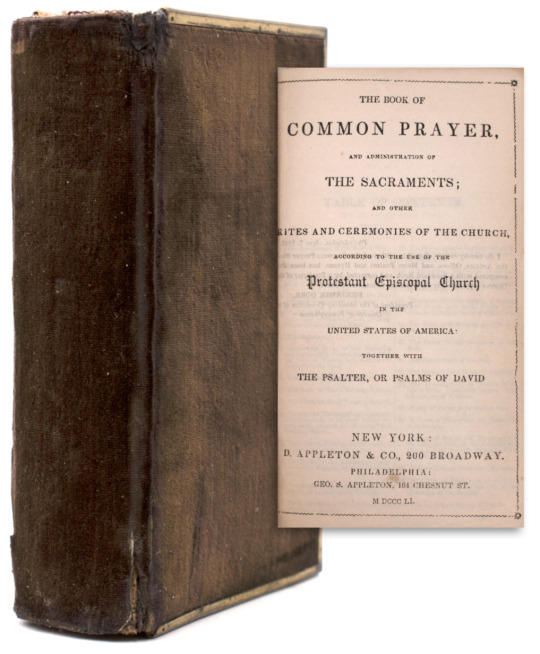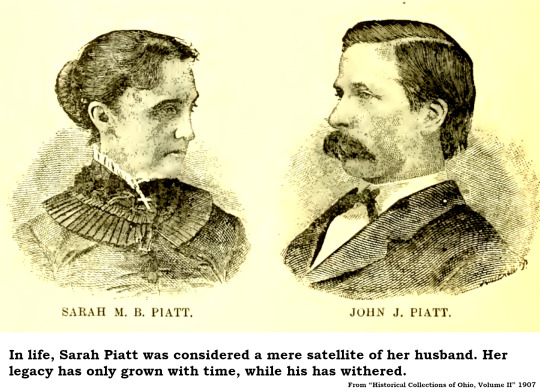#mason appleton
Text
are y’all seeing this !!!!
#tagging some of them i won’t be able to get all :(#dylan samberg#cole perfetti#nino niederreiter#adam lowry#brenden dillon#nikolaj ehlers#morgan barron#kyle connor#mark scheifele#josh morrissey#david gustafsson#mason appleton#plus a few more i forgot !!!#winnipeg jets#nhl#nhl hockey
10 notes
·
View notes
Photo

Winnipeg Jets || 2022-23 NHL Season
(Opening Night Roster vs NYR)
#Winnipeg Jets#NHL#Mark Scheifele#Adam Lowry#Blake Wheeler#Pierre-Luc Dubois#Nikolaj Ehlers#Kyle Connor#Mason Appleton#Cole Perfetti#Sam Gagner#David Gustafsson#Saku Maenalanen#Morgan Barron#Josh Morrissey#Brenden Dillon#Neal Pionk#Nate Schmidt#Dylan DeMelo#Logan Stanley#Connor Hellebuyck#David Rittich#Kyle Capobianco#Dylan Samberg#Axel Jonsson-Fbally#Rick Bowness#2022-23 NHL Season#Jets#Hockey
13 notes
·
View notes
Text

Mason Appleton - Colorado Avalanche at. Winnipeg Jets 02/24/23/
0 notes
Text

Gage Appleton Gooding
145 notes
·
View notes
Text
via ig - tommyhilfiger
#madelyn cline#outer banks cast#obx cast#instagram#partnerships#tommy hilfiger#events#th holiday dinner#lukas gage#chris appleton#mason gooding
8 notes
·
View notes
Text
Tories picked Price for Park Hill before Appleton had resigned
Our political editor, WALTER CRONXITE, on the latest bail-out from the Conservative-run council’s back benches
Short stay: Jade Appleton lasted less than three years as a Croydon councillor
Croydon Tories had selected their candidate for the forthcoming Park Hill and Whitgift council by-election before their current councillor had even announced that she was standing down.
Jade Appleton, who has…

View On WordPress
#Andrew Price#Conservative#Croydon#Croydon Council#Jade Appleton#Jess Hammersley-Rich#Labour#Park Hill and Whitgift#Peter Mason#Titilope Adeoye#Tory#Woodside
0 notes
Text
2023-24 Winnipeg Jets Regular Season Stat Leaders
Games played: Mason Appleton, Dylan DeMelo, Nikolaj Ehlers, Alex Iafallo & Neal Pionk (82)
Goals: Kyle Connor (34)
Assists: Josh Morrissey (59)
Points: Mark Scheifele (72)
+/-: Josh Morrissey (+34)(10th in league)
PIM: Brenden Dillon (92)
Wins (goalie): Connor Hellebuyck (37)(2nd in league)
Fewest losses: Laurent Brossoit (5)
Fewest goals allowed: Laurent Brossoit (45)
Saves: Connor Hellebuyck (1,656)
Shutouts: Connor Hellebuyck (5)(7th in league)
3 notes
·
View notes
Text
Rebecca Hamilton's copy of The Book of Common Prayer

The Book of Common Prayer was initially published in 1789 and served the U.S. Episcopal Church for more than a century. It was known as The Common Pray, prior to its revision in 1892. This book is fairly similar to its predecessor, the English Book of Common Prayer from 1662, at least for the main services. This edition was published by D. Appleton in New York, 1851.
The book is presumably a ten-year anniverary present from Philip Hamilton II - the youngest son of Alexander Hamilton - to his wife, Rebecca McLane. The two were married December 29, 1842, and inside is inscribed in Phil's handwriting shows that it was gifted on December 25, 1852;
Rebecca Hamilton
From your husband
December 25, 1852

This could suggest that Rebecca had a religious character, a common tradition in the Hamilton family. Particularly Protestants from the Episcopal Church, which the book is part of.
Eliza and Hamilton were both Protestants, albeit of different denominations. Although they raised their children pretty solidly on the same virtues. After moving to New York, they both went to Trinity Church, which was an Episcopal church and some of the children were baptized there. Older brothers Philip and Alexander Hamilton Jr. were also taught by Reverend William Frazer, the rector of St. Michael's Episcopal Church. [x] Hamilton would also read the morning services of the Episcopal church to his children. [x] And Hamilton's final Holy Communion on his deathbed was given by Reverend Benjamin Moore, the second Episcopal bishop of New York. [x]
In Albany, Eliza was raised in the Dutch Reformed Church. Whereas Hamilton was raised in the Presbyterian Church, with Reverend Hugh Knox - the minister of the Presbyterian church on St. Croix - was his mentor. Later, they married at the Schuylers's home in Albany by Eliza's pastor from the Dutch Reformed Church. And Hamilton's friend, Reverend Eliphalet Nott - another Presbyterian, but a minister - delivered a well-known eulogy for Hamilton that condemned dueling. Although, Hamilton also contributed to the construction of a new Presbyterian church in Albany, and at his deathbed attended Reverend John Mason, who was a Scotch Presbyterian minister. So, he had not converted to the Dutch Reformed Church.
Source; AbeBooks
#amrev#american history#jackson era#philip hamilton ii#rebecca mclane hamilton#alexander hamilton#historical alexander hamilton#elizabeth hamilton#elizabeth schuyler#history#historical artifacts#hamilchildren#hamilton family#hamilton children#hamilkids#hamilton kids#cicero's history lessons
40 notes
·
View notes
Photo

Then&Now || Mason Appleton
4 notes
·
View notes
Text





Los Angeles Kings at. Winnipeg Jets 02/18/20/
#winnipeg jets#mason appleton#blake wheeler#nikolaj ehlers#jets#nhl#hockey#nhledit#hockeyedit#gif#gifs
0 notes
Text
For Poetry Month, We Salute 18 Renowned Cincinnati Poets From Days Gone By
Each April, the Academy of American Poets sponsors National Poetry Month. In recognition of Cincinnati’s extensive contributions to that genre, here is a collection of local poets who achieved distinction. If living poets were included, this list could easily triple in length.
A Careless Poet Soon Forgotten
Among the earliest poets writing in Cincinnati was Charles A. Jones (1815-1851). He built a career publishing verse narratives about the Indians and outlaws of the western country. Between the years 1836 and 1839 he wrote frequently for the Cincinnati Mirror, and in 1840 contributed several poems to the Cincinnati Message, but paltry payments for these efforts led him to take up the law as his main career. A critic, William Turner Coggeshall, writing in 1860, admired Jones’ imagination and energy, but deplored his slapdash compositional habits and his aversion to revision: “The hasty production of an hour was sent to the press with all its sins upon its head.”

His Poem No Longer Memorized, Even The Plaque Is Gone
Generations of American schoolchildren were compelled to read and memorize a Civil War poem by Thomas Buchanan Read (1822-1872) titled “Sheridan’s Ride.” The poem celebrated General Philip Sheridan’s rallying his soldiers to victory at the 1864 Battle of Cedar Creek in Virginia. It was so popular that newspapers often parodied it to skewer other topics. For many years, a plaque was mounted on the wall opposite the Public Library on Eighth Street commemorating the address at which Read wrote the famous poem. Read was popular and prolific; his poetry was collected in 1867 in a set of three volumes. In addition to poetry, Read was an accomplished painter. Several of his works, notably “The Harp of Erin” are displayed at the Cincinnati Art Museum.
Lawyer By Trade, Hero By Aspiration
Although William Haines Lytle (1826-1863) studied law, he preferred the life of a soldier and composed poetry to celebrate his own heroic exploits. Lytle came from an honored line of military heroes. He fought in the Mexican War as a captain and achieved the rank of brigadier general during the Civil War. His verses were popular on both sides of the Mason-Dixon line. When a sniper’s bullet found him at Chickamauga in 1863, the rebel soldiers recognized Lytle and posted a guard around his body until it could be sent back to Cincinnati. As they stood watch, the Confederates quietly recited Lytle’s poems. Lytle Park in Cincinnati was his family’s estate.

An Inveterate Revisionist
Coates Kinney (1826-1904) was not a Cincinnati native, but he relocated to the Queen City at an early age. Kinney served in the Union Army during the Civil War and in the Ohio General Assembly afterwards while also practicing law and working as a journalist. He was just 23 when he wrote his most famous poem, “Rain on the Roof,” which was reprinted, collected, set to music, pirated, misattributed and celebrated throughout his life. Much of the confusion derived from Kinney’s incessant tinkering with the poem. Over his lifetime, he declared at least three different versions to be definitive.

The Piatts Helped Save Harrison’s Tomb
Sarah Morgan Bryan Piatt (1836-1919) and John James Piatt (1835-1917) were Cincinnati’s answer to England’s Brownings (Robert and Elizabeth Barrett). A married couple, each earned a reputation as a poet. James Piatt was a scion of the wealthy Piatt family, though he never had much money himself. Sarah, known as Sallie, was related to orator and politician William Jennings Bryan. The couple, who lived just outside North Bend when they weren’t posted to one of John’s political appointments in Washington or Ireland, worked to preserve the tomb of William Henry Harrison. In life, John’s reputation eclipsed his wife’s. In recent years, new critical appraisals agree that Sarah was, by far, the better and more innovative poet.
Newspapers Led Everard Appleton To Poetry
Everard Jack Appleton (1872-1931) started out as a newspaperman, with stints at Cincinnati’s Tribune, Commercial Gazette and Times-Star, earning a slot as a columnist known for humorous items in verse and prose. He also contributed stories and poems to national publications. He left behind a half-dozen volumes of poetry of which the best-known is probably “The Quiet Courage.” Appleton lived on Forest Avenue in Avondale.
A National Reputation Based On Odes To Domesticity
Bertye Young Williams (1877-1951) published as B.Y. Williams over a productive career that resulted in a half-dozen books of poetry and appearances in the New York Times, Ladies Home Journal, Good Housekeeping, Saturday Evening Post and other nationally distributed magazines. She founded a poetry magazine and publishing house, Talaria, with fellow poet Annette Patton Cornell. She was president of the Ohio Chapter of the League of American Pen Women and of the Cincinnati Women’s Press Club. A book she co-authored with Annette Patton Cornell, “Garland for a City,” was illustrated by Caroline Williams (no relation).
Cincinnati’s Unsung (But Prolific!) Poet, Horace Williamson
Horace G. Williamson (1880-1943) was perhaps the most prolific poet in Cincinnati history. You won’t find him in English class these days, nor in any anthologies. Williamson wrote for money, not for art. In the early 1900s, Williamson built a profitable sideline writing poems for greeting card companies, sometimes ghost-writing love letters on spec. He had a lot of side hustles. While employed as social secretary of the YMCA, Williamson ran a talent agency and also performed in character as the Roman dictator Cincinnatus in quite a few civic celebrations.
Confined To Bed, Raymond Dandridge’s Spirit Soared
Although he once achieved fame, Raymond Garfield Dandridge (1883-1930) is sadly forgotten today. His poetry fits comfortably between his predecessor Paul Laurence Dunbar (to whom Dandridge was often compared) and his successor, Langston Hughes, beacon of the Harlem Renaissance. Dandridge was almost totally paralyzed by polio when he was a young man. He spent his entire writing career confined to bed, supporting himself and his mother by taking orders for coal shipments. Eventually, Dandridge’s poetry was collected by his friends into three slim volumes, offered for sale to augment his income as a coal merchant.
George Elliston’s Poetic Legacy Lives On
Eccentricity manifested itself in the person of George Elliston (1883-1946). She was a longtime Cincinnati newspaperwoman who lived like a derelict but cultivated a bohemian entourage. At her death, Elliston left behind a few slim volumes and an estate worth a quarter-million dollars, grubbed together over the years by living in cold-water apartments, wearing castoff clothing and mooching meals. She bequeathed all of this to the University of Cincinnati to establish a modern poetry collection. Some of the great poets of the English language, such as Denise Levertov and Robert Frost, have served as Elliston poets-in-residence.
Eloise Robinson Was A Rare Woman War Poet
Few Cincinnatians knew that Mrs. Corda Muchmore, wife of a College Hill realtor, was, in fact, Eloise Robinson (1888-1958), one of the finest war poets of America. In 1918, she journeyed to France with the YMCA to hand out refreshments and recite poetry to support the American troops. Her poems inspired by her days at the front, such as “He Had Such Glory In His Closing Eyes” and “War” were published nationally and much admired. She taught verse writing to generations of Cincinnatians through UC’s Evening College.
Postmaster And Poet
Samuel Schierloh (1889-1968) followed a colorful road to poetry. Born in Reading, Ohio, he served five years in the Navy during the days when it was known as Teddy Roosevelt’s “Great White Fleet.” After a few years as an apprentice tailor in downtown Cincinnati, he joined the Post Office and eventually became postmaster in Mount Washington. In addition to penning poetry, he was a league bowler, golfer and an amateur painter. His poems mostly debuted in Cincinnati newspapers, but were collected in several volumes including “Down the Bright Seas” in 1958.
Cornell Declined Appointment As Ohio’s Poet Laureate
In 1974, Annette Patton Cornell (1897-1986) was named the best Cincinnati writer of the past 50 years by the National Society of American Pen Women. Over a long career, she published five collections of her own poetry and promoted the work of others through a literary magazine, Talaria, she founded with fellow Cincinnati poet B.Y. Williams. Cornell had her own radio show devoted to poetry and other literary topics. An Ohio governor tried to recruit her as the state’s poet laureate, but she declined the invitation as a resident of Fort Mitchell, Kentucky. Her son, Si Cornell, had a long career at the Cincinnati Post.
Lawrence Welk Boosted The Career of Cincinnati’s Greeting Card Poet
All of Helen Steiner Rice’s (1900-1981) best-selling books were published by Cincinnati’s Gibson Greeting Card Company. Rice was born in Lorain, Ohio and married a Dayton banker who committed suicide during the Great Depression. After working in publicity and inspirational speaking, she joined Gibson as an editor and worked there for more than 40 years. Her book sales skyrocketed in the 1960s when several of her poems were read on the Lawrence Welk television show.
X-ray Damage Launched A Poet’s Career
While still a teenager, Anna M. Tansey (1906-1989) almost died when a doctor exposed her to a nearly fatal dose of X-rays. She lost one lung and part of another. Long an invalid, confined to bed, she devoured piles of books brought by her family from the library. When new antibiotics allowed her to leave her house, she embarked on a career as a poet and an advocate for ecumenical relations among religions. Her poems were often on spiritual themes, as the title of her best-selling poetry collection, “Seven Gifts of the Holy Spirit” illustrates. As arthritis claimed her ability to type, she composed on a dictating machine and had her poems typed out by an assistant.
A Poet Of Great Influence
Kenneth Koch (1925-2002) was born in Cincinnati to a fairly well-to-do family. His father sold office furniture and the family had a live-in maid. The family was frequently mentioned in Cincinnati newspaper society columns. After military service during World War II, Koch earned his doctorate and began a long career at Columbia University. Although he published dozens of books and was frequently anthologized, Koch is often remembered more today as a teacher than as a poet. His book on teaching children to write poetry, “Wishes, Lies and Dreams” (1970) was enormously influential.
One Small Poem For A Man . . .
The oeuvre of Neil Armstrong (1930-2012), poet, is slight, consisting as it does of only two published stanzas, and that bit of doggerel clouded by controversy. In 1978, the Mini Page, a nationally syndicated children’s section carried in many newspapers, including the Cincinnati Post, asked Armstrong to provide a quote or first-person account of his moon landing. Rather than jotting a few lines of prose, Armstrong, then a professor at the University of Cincinnati, penned eight lines of poetry, clearly aimed at a juvenile audience. Unfortunately, through an editing error, the Mini Page deleted two words from Armstrong’s final line. Armstrong was not happy.
7 notes
·
View notes